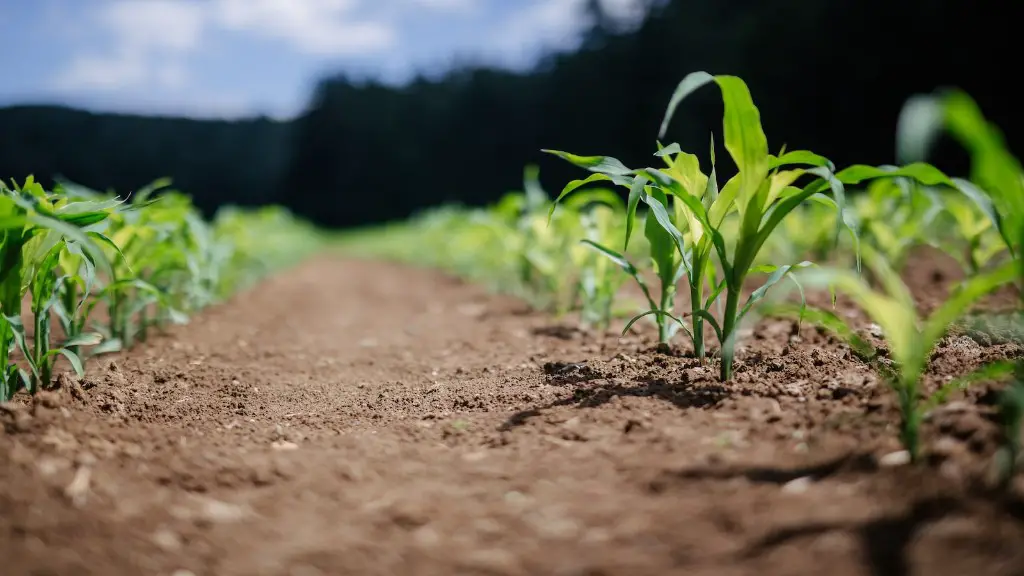Most people have heard of pesticide drift, but fewer are familiar with the term “spray drift.” Pesticide drift occurs when small particles of a pesticide become airborne and are carried away from the area where they were applied. Drift can occur while the pesticide is being applied, or afterwards if the treated area is disturbed. Spray drift, on the other hand, specifically refers to the movement of pesticide droplets through the air during application. Drift and spray drift can both pose serious threats to human health, the environment, and non-target plants and animals.
Spray drift refers to the movement of pesticides through the air during application. Pesticide particles can be transported by wind, thermals, and turbulence. Spray drift can pose a risk to human health and the environment if the pesticide drifts onto people, animals, or plants that are not the intended targets.
How do you stop spray drift?
There are a number of ways to reduce spray drift and other considerations:
-Spray at low wind velocities (3 to 10 mph)
-Reduce spraying pressures
-Increase carrier volumes/application rates
-Select the proper nozzles with coarse spray droplets
-Use lower spray boom heights
-Reduce sprayer ground speed (less than 10 mph)
-Use drift retardants
Pesticide drift is a major problem for farmers and the environment. Drift occurs when pesticides are applied to crops and the wind carries the pesticides away from the target area. This can result in the pesticides coming into contact with non-target organisms, such as beneficial arthropods like predatory mites. Pesticide drift can have a negative impact on these beneficial organisms, as well as on aquatic ecosystems.
What is drift farming
Drift is the movement of pesticide from the target field onto nearby sensitive plants. Most drift consists of spray droplets moving downwind during an application. Drift can also occur when dust or vapors from a field move off-site. Drift can damage crops, harm people, and contaminate surface water and groundwater. To reduce drift, use the least wind-sensitive application method and weather conditions, choose the right nozzle, and apply pesticide early in the morning or late in the evening when winds are calm.
Spray drift is the movement of liquid spray particles through the air after application. It is often unseen and while often unavoidable, it can be minimized. Drift increases with wind speed and height above ground when drops are released. It increases with spray droplet size.
How far does pesticide spray drift?
Herbicide vapor may drift farther and over a longer time than spray droplets. However, spray droplets can move over two miles under certain environmental conditions, so crop injury a long distance from the intended target is not necessarily due to vapor drift.
There are a number of factors that can affect the drift of chemicals used in farming, and many farmers are unaware of the potential for drift beyond the boundaries of their property. I have seen chemicals drift up to one mile from the point of application, and while winds may be a factor, other factors such as humidity, inversion, soil and moisture conditions can also play a role. It is important to be aware of the potential for drift and take precautions to protect yourself and your property.
What are the different types of spray drift?
Spray drift is the movement of pesticides away from the area where they were intended to be applied. There are two types of spray drift: vapor drift and particle drift.
Vapor drift occurs when the pesticide molecules volatilize, or turn into a gas, and drift away from the application site. This can happen even when the application is being done properly.
Particle drift occurs when the spray droplets that contain the pesticide move away from the application site. This can happen if the droplets are too large, if there is wind, or if the application equipment is not functioning properly.
Both types of spray drift can result in the pesticide being applied to areas where it is not wanted, which can damage the environment or pose a risk to human health.
PAN warns that “volatilization drift” can occur when pesticides evaporate into the air from crops or soil. This can happen for up to several days after an application. This type of drift can be just as harmful as spray drift, so care must be taken to avoid both.
How long does herbicide drift last
Drift occurs when pesticides or other chemicals move beyond the area where they were applied. Drift can have a significant impact on crops, depending on the chemical involved. In some cases, damage may not be immediately apparent. Additionally, a single case of drift can cause problems for several years. For example, a single instance of 2,4-D drift onto a grape plant can minimize or prevent a harvest for two or three years. Drift is a serious issue to consider when applying any type of chemical.
Small-to-medium size droplets are desirable when applying insecticides and fungicides because they usually provide better coverage. Small droplets, however, are difficult to get deposited on the target, so they may remain airborne and drift long distances because of their light weight and small size.
Do trees stop pesticide drift?
Trees, shrubs, and perennials can act as a buffer zone to capture or divert pesticide drift before it reaches your garden. By planting these protective plants around the perimeter of your garden, you can help reduce the amount of harmful chemicals that enter your garden and potentially harm your plants.
Drifting is a driving technique that is used to intentionally make the car spin sideways and to cause the car to oversteer. Drifting is a popular technique among drivers who want to show off their skills and to impress onlookers.
What wind speed do you need to spray drift
It is important to note that the optimum window for spraying is when the wind speed is between 12 and 6 mph. This is because there is a high risk of spray droplets reaching neighbouring fields and crops when the wind speed is above this.
Pesticide drift occurs when pesticides are carried away from the area where they were applied and onto other areas. This can happen when the wind blows or when spraying equipment is not properly calibrated. Pesticide drift can be harmful to human health if people are exposed to it. Symptoms of exposure may include eye irritation, nose irritation or runny nose, coughing or wheezing, or rash. Different pesticides affect different body systems and can cause different symptoms.
What does herbicide drift look like?
If you suspect that your plants have been damaged by herbicide drift, be on the lookout for these symptoms:
-Cupped or curled leaf margins
-Twisting or unnatural narrowing and elongation of leaves
-Color changes on the leaf edges
Pesticide applicators should be aware of two things to avoid spray drift: droplet size and wind direction and speed.
How long does Roundup remain active in the soil
Glyphosate is a common herbicide that is used in agriculture. It can persist in soil for up to 6 months, depending on the climate and the type of soil it is in. Glyphosate is broken down by bacteria in the soil. Glyphosate is not likely to get into groundwater because it binds tightly to soil.
Glyphosate is an herbicide that is used to kill weeds. It works by inhibiting an enzyme that is needed for plant growth. Glyphosate is effective against most plants, but it does degrade quickly in most soils. The half-life of glyphosate is estimated to be between 7 and 60 days.
Final Words
Spray drift is the movement of pesticides through the air during application. Drift may occur when spray particles move off-target from the field being treated, either by being carried by wind or by being physically dislodged from the sprayer. Drift can result in damage to nontarget crops, vegetation, and property, and can also pose risks to human health.
Spray drift is the movement of pesticide particles through the air after application. It can impact non-target areas and cause environmental contamination and human health problems. Agricultural workers and residents near sprayed areas are at risk for exposure to pesticides through inhalation, skin contact, and ingestion. To minimize spray drift, farmers should use the proper application equipment and follow all label instructions.





